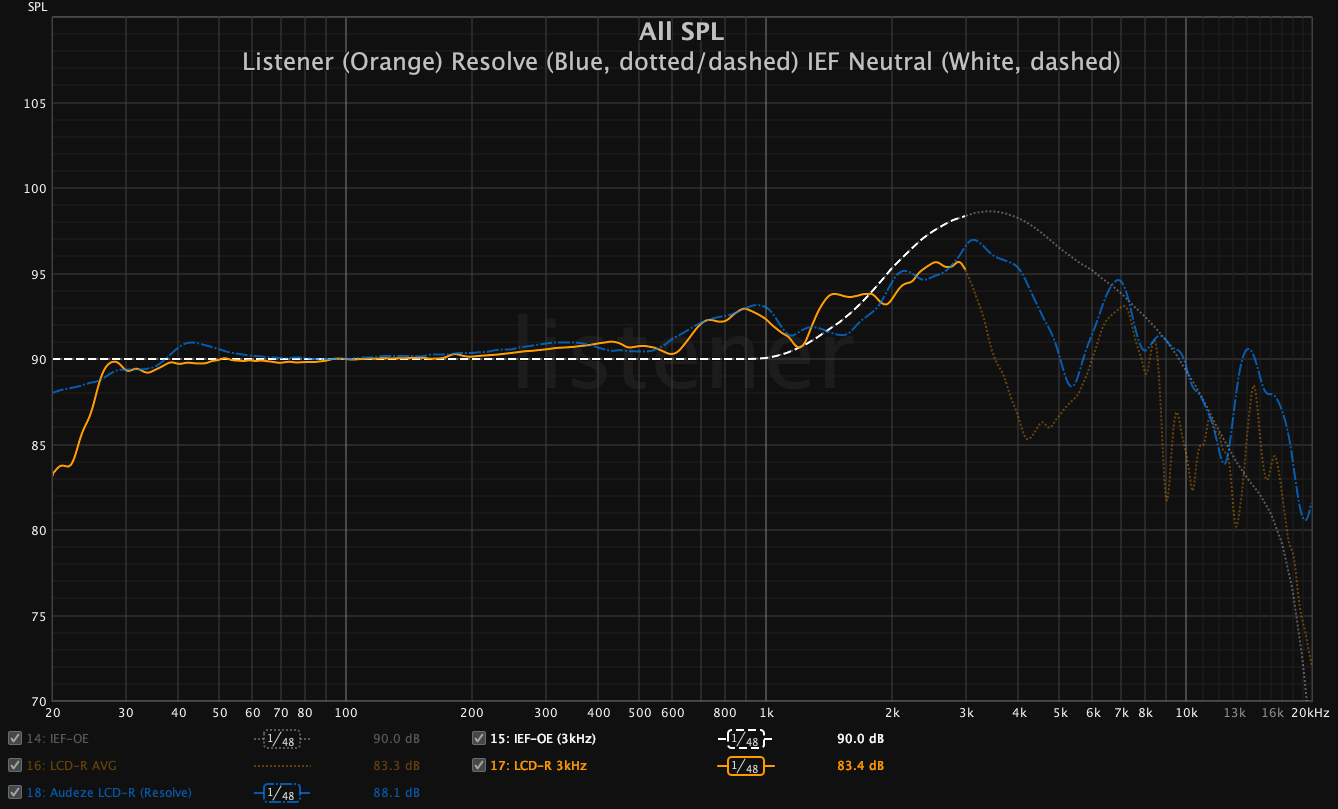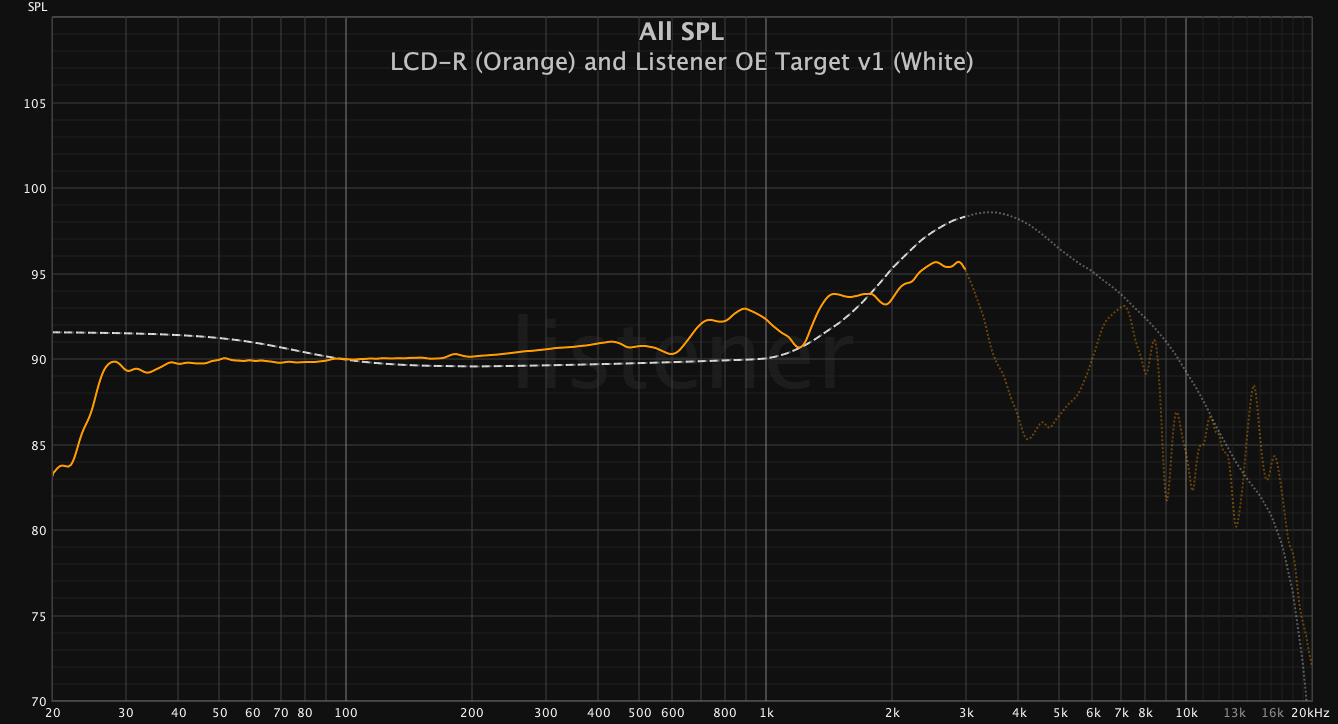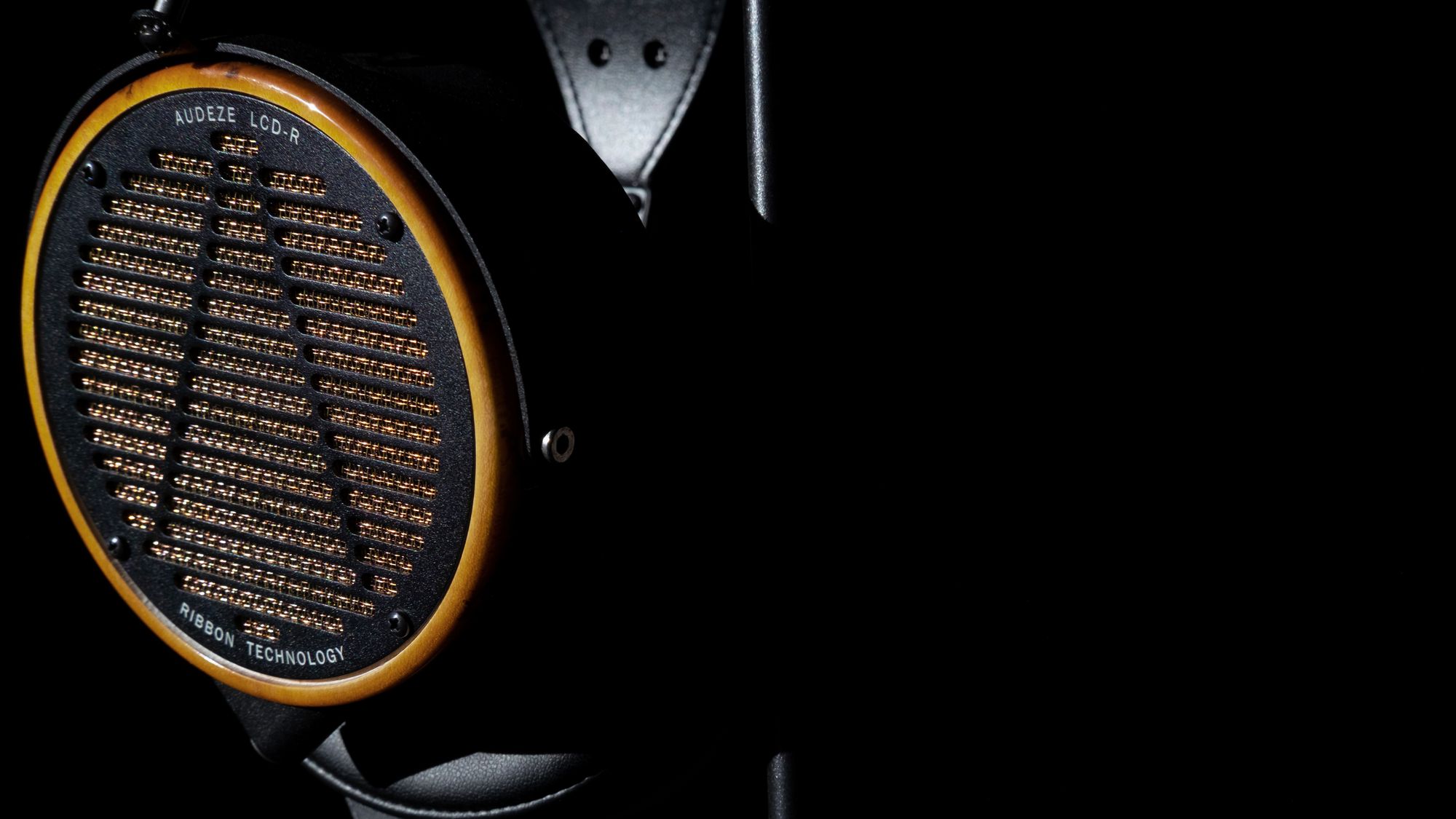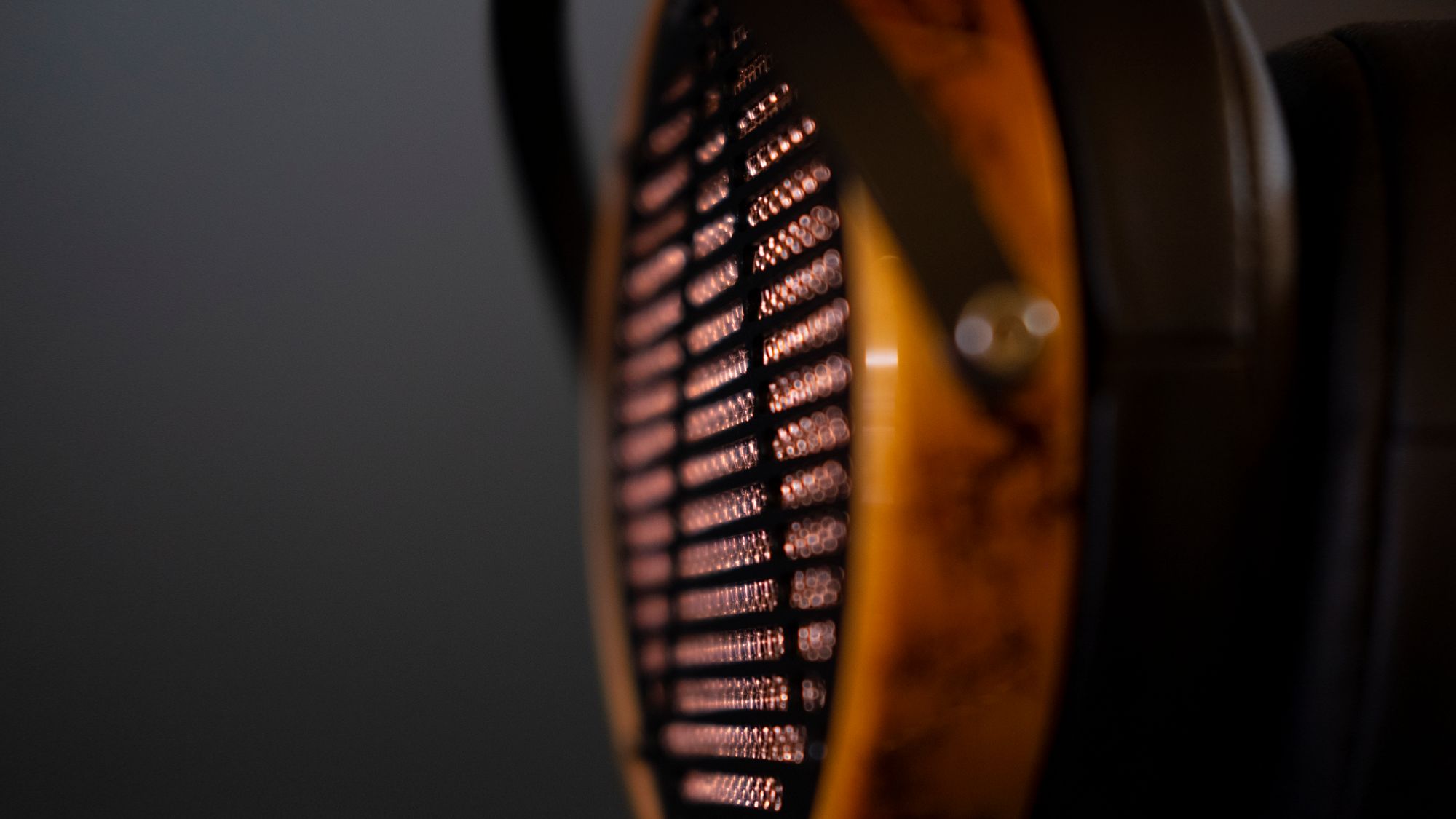The Audeze LCD-R completely evaded my interest when it was announced. The combination of the price, necessity of pairing it exclusively with the included Schiit amplifier, and the unorthodox technology made this headphone seem like a one-off that would likely be forgotten for all the right reasons. It was especially uninteresting to me because I was at a point in my journey where I was unimpressed with the only other "ribbon" transducers I'd heard (RAAL SR1a and, if we stretch the definition a bit, the HEDDphone).
However, Flux was one of the curious few who bought the LCD-R immediately upon release. In December of last year, Flux co-hosted what ended up being my first audiophile meet and, luckily, he was kind enough to bring it for demoing. After I'd heard basically everything else there, I was gently reminded that he had the LCD-R and accompanying Jotunheim-A ready to go should I want to hear it. Keeping in mind that this was after hearing Susvara for the first time, multiple LCD-4s, Utopia, multiple HD800s and HD6x0s, I thought "hopefully it's at least okay, though there's no way it's as good as Flux's LCD-4."
He got the system all plugged in and warmed up, using Claire's Bifrost 2 as a DAC with Qobuz as a source. I put LCD-R on my head (taking note of the absence of front damping) and threw on one of my references for dynamics, speed, and separation: Arctic Monkeys' Brianstorm. I was locked and loaded, ready to compare it to the memory I have of this track on my pair of LCD-Xs. What I heard was the biggest surprise of the entire meet.
The review in earnest came about when Flux offered to send it to me for testing at home, since he knew I had lots to say about it at the meet. I'm grateful for the opportunity to evaluate it more thoroughly, and perhaps bring my initial impressions back to earth a bit. Because as I've learned over time, the things that can really "WOW" you on a first impression are almost always the flavor headphones that eventually reveal their compromises with the benefit of continued testing...
...And continued testing it has gotten. My initial impressions of the frequency response were on point for the most part, but the initial rapturous enthusiasm has worn off and been replaced by a measured and more moderate respect. I think LCD-R offers a unique and interesting foil to both the LCD-X and LCD-4, while not really being technical in the same way as either of the two.
Testing Setup
Unlike the normal situations where I'll try to hear the headphone/amp/DAC in as many different situations as possible, here I'm kinda stuck.
LCD-R is sold with a bespoke amp made to handle it's incredibly low output impedance, and because I don't own this headphone, I don't feel comfortable taking a chance on trying it with my personal headphone amp. So the setup here is pretty simple:
Apple Music Lossless > USB > Dangerous Music Source (DAC) > XLR > Jotunheim-A > LCD-R
Now, before we get into the usual Frequency Response section, a small tangent to reveal something new for the readers:
Measurements

You might be saying... that's different. And yes, it is: I have recently acquired my own clone of a GRAS 43AG, using a clone IEC711-spec coupler and clone KB0065 pinnae.
The main differences between my rig vs. industry standard rigs like Resolve's or Crinacle's is the stiffness of the pinnae and the length of the ear canals. Due to these factors, the comparability of my measurements to industry standard rigs is limited exclusively to circumstances wherein the headphone is one that does not significantly compress or deform the pinnae, as KB0065 and its clones are not sufficiently anthropometric for simulating the way real ears compress. Even then, my measurements are only reliably comparable to theirs until around ~3kHz.
With something like HD800 or the large-padded Audezes, I'm confident that the measurements are usable up until the ~3kHz point, after which point the length of the ear canal as well as the stiffness of the pinnae being different plays a significant part in how the two systems differ. With something like an Aurorus Borealis or Hifiman Sundara, both of which sit at least in part on the ear, results would likely be even more inaccurate.
You'll notice I've darkened/greyed out results for the measurements as well as the targets above 3kHz; this is to make it eminently clear that my measurements are not really reliable past that point.

That all being said: I find the picture painted by these measurements to be reasonably accurate (up to 3kHz) to how I hear this headphone and the other headphones I've measured. For now, I will do as I always have and analyse the sound entirely by ear, but now all of my lovely readers will have squiggles to look at. A proper industry standard pinna will be coming soon, and previously released measurements will be updated at that point.
Let's now move on to the review and start with how I actually digest the tonality of this headphone.
Frequency Response and Tonality
All evaluation is done without EQ.
For those familiar with Audeze's house sound, it might seem like there's not much new here, and to that I'd say, "Yesn't."

The bass is standard fare for Audeze, being mostly comparable to LCD-X 2021 in tuning/relationship to the rest of the midrange. Frankly, the main feature here on a planar with a sealed front-volume like this is mostly going to be how it relates to other areas (provided there's no seal break). On my head it extends well into the infra-bass as we can expect with an Audeze, and I don't notice any new problems with the relationship between bass and other areas of the FR. If I had to take note of a difference here, I would say it's slightly more thick and syrupy down here than LCD-X, and not necessarily always for the better.
There is the familiar counter-clockwise midrange slope upward from 200Hz and subsequent bump around the 700-900Hz region, after which point things get a little rocky like on most of the 106mm LCDs. Moving up from there, LCD-R has pretty solid ear gain, again not unlike like the current revision of LCD-X. Due to this, there's a sense of clarity here that makes it one of the safer midrange tonalities in Audeze's stable.
Likely the most interesting aspect of the frequency response, and where I feel it deviates most from other Audeze offerings, is the treble. LCD-R sounds like it's quite a bit more elevated above 6kHz than the other Audeze LCDs I've heard, and the amplitude is more evenly boosted (as opposed to the normal peaking and dipping sharply) across the range as it ascends in frequency, which makes it brighter but also subjectively smoother in presentation than many of the LCD4s and LCD-Xs I've heard.
This isn't an awful tonality, in fact there are aspects I definitely like.
Electric guitars, for example, all sound pretty great on LCD-R. This is likely due to the 700Hz-1kHz range being emphasized, while the rest of the midrange is what I'd call within the bounds of "normal," even if it is overall a bit forward.
I enjoy the fact that the midrange emphasis here isn't like many of the full-size LCDs of yore, where most of the energy is relegated to the low mids and "balanced" solely by one or two piercing treble peaks. LCD-R is a more balanced tuning overall than most of the 106mm LCDs, but it's far from perfect.

The bass isn't especially impactful or big sounding on any bass instruments or kick drums. The bass texture, while being what I'd call price-appropriate & deserving of the descriptor of "rich," is unfortunately an artifact of a slight counter-clockwise imbalance between fundamental and harmonic here. Primary harmonics (say the first 4 or 5 overtones on a bass, snare drums or vocals) get a little too much love and, as such, this presentation pairs a lack of size with simultaneously sounding a bit too honky and congested. I notice this most on snare drums, where the 300-500Hz region being boosted over the fundamental makes snares sound more resonant and cuppy than they should. The presentation here is textured, yes, but unfortunately inaccurately so. The bass to midrange integration is just too lean to convey any convincing heft.
This coloration may in fact make sense to the more Harman-adherent among us, who expect overtones to get a helpful push to be more present against the fundamentals. Unfortunately, the pinna gain between 2-4kHz isn't quite present enough to make this midrange tilt make complete sense to me. It would be a more natural sounding midrange if LCD-R had more of a contour in the 1kHz area leading up to the 2kHz region too, but left how it is, there's just too much center midrange. The overall sense I get from this area is that most midrange elements are made to sound boxy and nasal, while somehow also being a little too blurry and indistinct (perhaps due to the bass syrupiness I mentioned prior). Not necessarily in an unacceptable way, but in a way that can be had for much less money.
In fact, the best and closest comparison point I have for the midrange presentation here is actually the benchmark by which many modern planars fail: the Yamaha HP1. This orthodynamic headphone from the 70s sports a mostly center-midrange focused tonality in a small, light, criminally inexpensive package, while not being nearly as compressed or thin sounding as the modern offerings from, for example, Hifiman. That sort of "small" sounding boxiness that HP1 has is prevalent in LCD-R, and timbrally they share other similarities as well (but we'll get to that).
When it comes to the treble, I'm really not sure how to convey it as a function of frequency response alone. The treble is very forward. I don't think it's balanced quite well enough by the emphasized center-midrange and the (mostly) appropriate upper midrange. Cymbals sound somewhat cloyingly sparkly, acoustic guitars have tons of shimmer, vocals have the absolute most air. Usually, I would hate all of this.
But... I don't. Even though I consistently have problems with planars lacking treble control, this is one of the only situations wherein I find a treble boost to be okay. This paradoxical effect means it might be worth talking about something I usually save for the end of my reviews a bit early:

Timbre
I'm not sure what on earth Audeze did differently with this headphone, because as I learned early on, LCD-R is a planar magnetic transducer, even if Audeze claims that the membrane having more traces than the usual planar magnetic drivers makes it more similar to a ribbon.
LCD-R's decay and frequency response really aren't much different vs. its sister LCD offerings like the LCD-X. It's an Audeze planar, meaning it won't have the natural decay of a dynamic driver, and in fact will slightly decouple throughout the FR (bass and midrange decay sounds too short, treble decay sounds too long).
LCD-R also homogenizes instrument identity, arguably more than others like LCD-X and 4 do. It simply won't sound ever quite as organic as other headphones do, even ones a fifth of its price.
But unlike its closely related planar magnetic peers, LCD-R is... sweet. Svelte. Silky.
The material-related timbral character here, especially in the treble, is decidedly not the plasticky, ringy, thin sounding timbre I'm used to with most planar diaphragms, nor is it plagued with the metallic edge or buzz I hear on, for example, the Abyss headphones. It's not even really similar to the other ribbon transducers I've heard like RAAL SR1-a or HEDDphone.
LCD-R conveys an entirely new type of timbral character for certain areas, and the silkiness afforded to this headphone synergizes very well with its most impressive technical aspects (those being speed and separation). This new and interesting character unfortunately doesn't carry throughout the whole of the headphones' response, as I find the midrange timbre in particular to be similar to the Yamaha HP1 mentioned earlier. It's a little too boxy and plasticine to be natural in the mids, but the LCD-R's treble carries the whole presentation, at least until your ears normalize to it or you compare it to certain dynamic driver headphones.
The treble emphasis on display here isn't something I would usually find acceptable, but because of how novel and technical it is, it gets a pass. This is especially strange given LCD-R's tuning is extremely close to being—simply put—a brighter tilted LCD-X, which is not what I would've done if I were given the chance to retune LCD-X.
The timbral experience alone is at least interesting enough to justify it existing, and makes it easy enough to sublimate the tonal quirks into my enjoyment rather quickly, if not permanently.

Dynamics
While I'd say that LCD-R doesn't completely sacrifice dynamics like many other planars do, that doesn't mean it's class-leading in that aspect or really even close. It is merely okay, and even then only just. The feeling of moving mass in big volume swings is probably where there's the most compromise overall, as its distribution is noticeably compressed when it comes to contrast in size/mass; everything sounds quite similarly small.
In terms of punch and slam, again it is only okay, barely eking out a passing grade. It doesn't compromise massively, but it's nothing special, sitting right around LCD-X level.
Microdynamic contrast is likely where it shines most; little gradations of volume and texture are gripped and portrayed extremely transparently and directly. Even versus its obvious competition like Arya, LCD-X and even other true ribbons like SR1a, I find it to be better at this aspect of controlled delivery of speed (particularly on treble elements) than anything I've heard near its price range. Though not quite as texturally contrasty as LCD-4, in terms of pure speed I actually think LCD-R outpaces it easily. In fact, in trying to probe for comparisons, I realize LCD-R is likely the planar transducer with the fastest treble I've ever heard, moreso than even Hifiman Susvara and Abyss 1266 Phi TC.
That being said, speed isn't everything. Prioritizing microdynamics and speed over macrodynamics and punchiness isn't usually something I tend to abide when choosing a headphone, so this talent of LCD-R's is wasted on me somewhat.
Soundstage and Imaging
This is very much a classic LCD stage presentation: competent in width, but lacking forward depth and suffering from an almost nonexistent front-left/front-right stage. Unfortunately for LCD-R though, I actually find it to be one of the smallest sounding Audeze transducers when it comes to stage too, sounding more like a less panoramic LCD-5 than it does any of the other the 106mm variants.
Imaging, on the other hand, is where I find LCD-R to do certain aspects better than any of the Audezes I've heard, even the LCD-4. The speed and ease of separation present here really makes every element, even in the busiest of passages, incredibly distinct and visible. The tuning having appropriate ear gain paired with the stark treble emphasis lends the images a sense of stability, clarity, and structural coherence. The images are absent any haze or smearing throughout the stage like I'm used to hearing on the egg-shaped Hifiman headphones, and even on headphones like Sennheiesr HD800. The sheer transparency in image separation at play here is surely the main thing that continues to wow me about LCD-R, as this is easily its main benefit vs. its competition.

Conclusion
Overall, the sense here for me is that LCD-R technically slots in right where you might expect it to based on its retail price. It sports a noticeable tech upgrade from LCD-X while not stepping anywhere near the technical benchmark of LCD-4 in the aspects I care most about.
The most surprising and interesting aspects of LCD-R lie in the realm of technicalities that I'm just not really fussed with. It has crazy treble speed and image separation, which is it's main benefit over pretty much any other planar transducer in its class, as well as a completely novel material-related timbre.
But speed and separation is something we may not all be looking for, and while the timbre is a trait that I'd say is worth hearing at least once for the novelty, LCD-R just doesn't do enough else to make for a compelling option next to LCD-4, or even next to less expensive, more well-rounded options like Audeze's new MM-500 (a review of which is coming soon).
LCD-R—while being unique and interesting enough in its own right—isn't quite different enough to be worth it to me. If the LCD-4 is the ultimate bass-head's headphone, LCD-R is more like the ultimate treble-head's headphone... and I am pretty damn far from a treble-head.
I enjoyed my time with LCD-R at home, but it only took a week or two to get bored of its idiosyncrasies and desire something more normal.
I can't recommend LCD-R given what it offers for the price unless you really want treble speed, image separation, or desire something quirky to round out a collection of oddities and uniquities.
If you can try LCD-R at a meet or show, I highly recommend having a listen, as the initial experience can be jarring, exciting and super fun... but once the novelty, silky smoothness, and the fairy dust wear off, what you're left with is a beautiful looking headphone with one or two standout features, but not much else worth writing home about.
Comments?
Leave us your opinion.